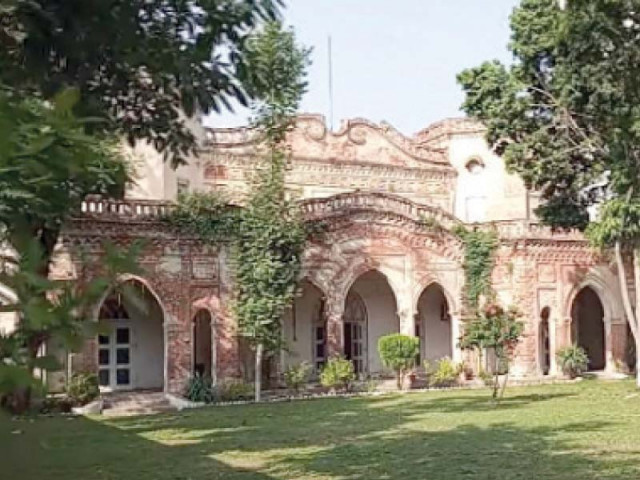Shrinking Poonch House in need of facelift
Experts urge restoration, declaring the majestic structure a heritage site

In the heart of Rawalpindi’s Saddar lies the imposing Poonch House – a structure seeped in history and full of majesty despite its derelict state.
Dating back to 1897, the mansion combines European and Indian, particularly Kashmiri, architecture. It is unique that its construction was done using lime, black gram (daal mash) and clay.
The main complex consisted of courtyards, balconies, and separate living quarters for employees. The main hall housed a court and hosted grand parties and masquerades with royalty, dignitaries in attendance.
The walls were embellished with intricate artwork and beautifully carved wooden balconies sat three to four feet from the lawns. A large-sized wooden grill in the balcony of the lower chamber separated the women’s quarters.
The entire building was painted in pristine white although that colour has faded over the years. The side lawns and backyards of the mansion are heavily encroached by wild bushes and grass. The maharaja’s chamber was at one point serving as a sleeping room for employees.
The woodwork in the balconies on the second-floor grand hall is a masterpiece showcasing traditional intricate designs.
At that time, it spanned an area of 37 kanal. Now, it has shrunk to 23 kanal, 11 marla. Of thise, 14 kanal, 11 marla is the covered area and nine kanals are open air.
Raja Moti Singh, the ruler of Poonch, had the mansion constructed to serve as a rest house for the Rajas of Poonch.
In 1914 Poonch became a part of the state of Jammu and Kashmir, after which the Poonch House became the property of Maharaja Gulab Singh, the ruler of Kashmir. In its upper floor, the office of the maharaja still exists with some vestige of past grandeur.
It also served as a guest house for the British generals during their rule in the Subcontinent.
After Pakistan’s creation, it was the home of Azad Jammu and Kashmir’s first prime minister and camp office of AJK president and prime minister.
In 1961, when Muzaffarabad became the capital of Azad Kashmir, the mansion was given to the federal government with the control transferred to the Federal Ministry of Kashmir Affairs, which remains in place till today.
Parts of the Pooch House now serve as the AJK election commission’s office.
During General Zia's reign, military courts were established on the premises where political opponents were sentence to whipping and imprisonment. These courts ran for five and a half years.
In 1986, an eight-storey structure was constructed on its grounds. It included around 200 shops and offices, and around 100 residential quarters.
These were rented out at subsidized rates with the tenants paying the same rents three decades on.
On one side, a terminal was constructed for the Government Transport Service (GTS). The idea was for government buses to ply from here. It was later rented out to a private company, which also closed down. This terminal is now empty.
Parts of the Poonch House remain in derelict and overgrown with vegetation. Its history is slowly crumbling while being concealed.
Historians and archaeologists say that it should be declared a heritage site and efforts should start to restore the mansion to its original state. It offers massive potential as a tourist attraction giving a peek into its own and the area’s glorious past, they said.
Similar Poonch Houses were built in Lahore, Sialkot and Karachi, and they are in an equally pitiable state.
Published in The Express Tribune, November 7th, 2023.



















COMMENTS
Comments are moderated and generally will be posted if they are on-topic and not abusive.
For more information, please see our Comments FAQ